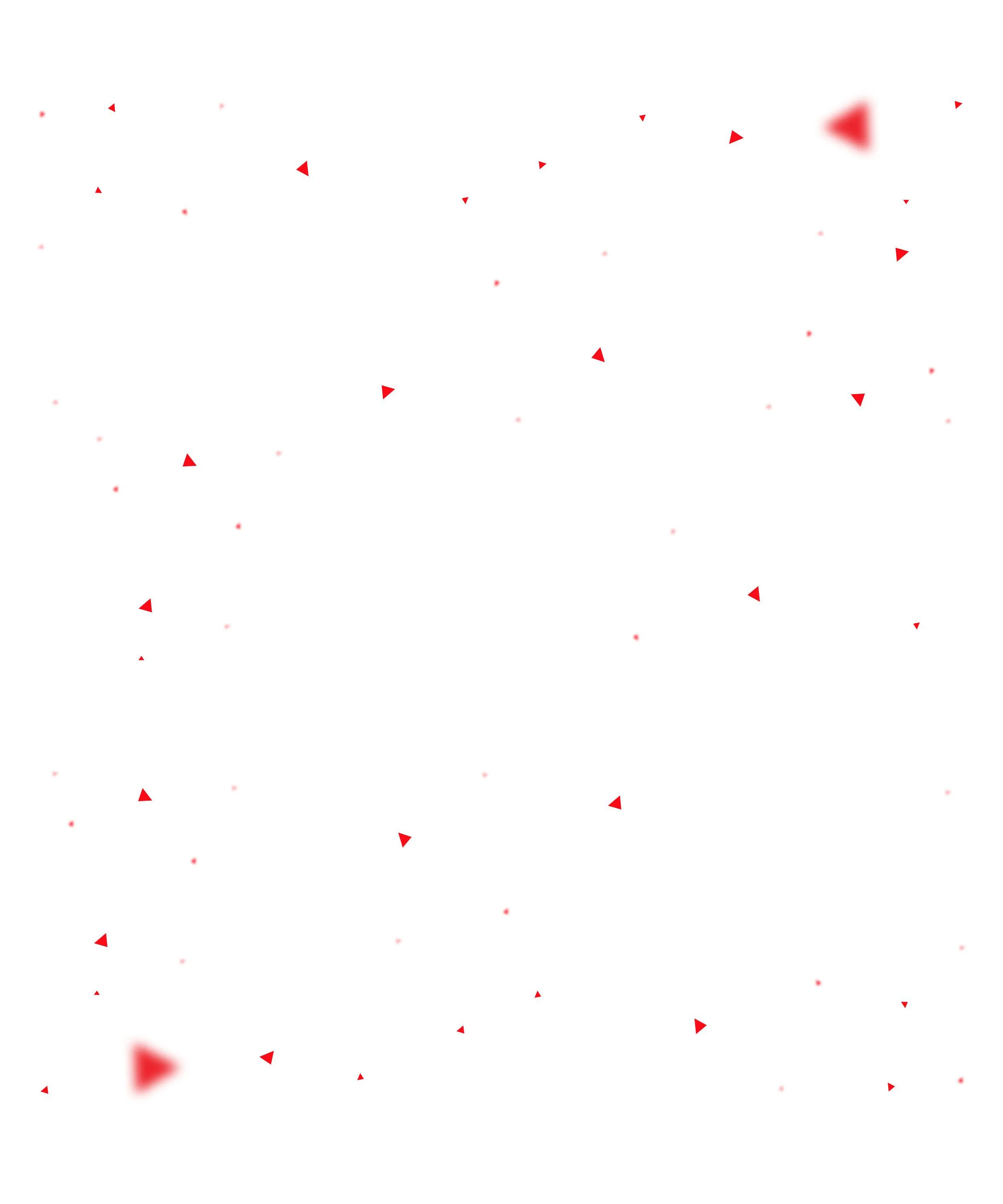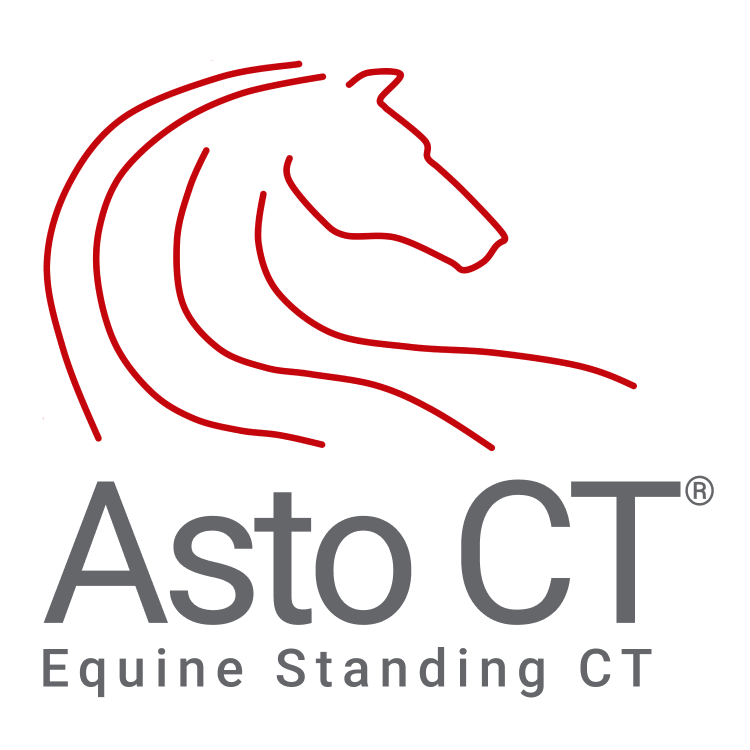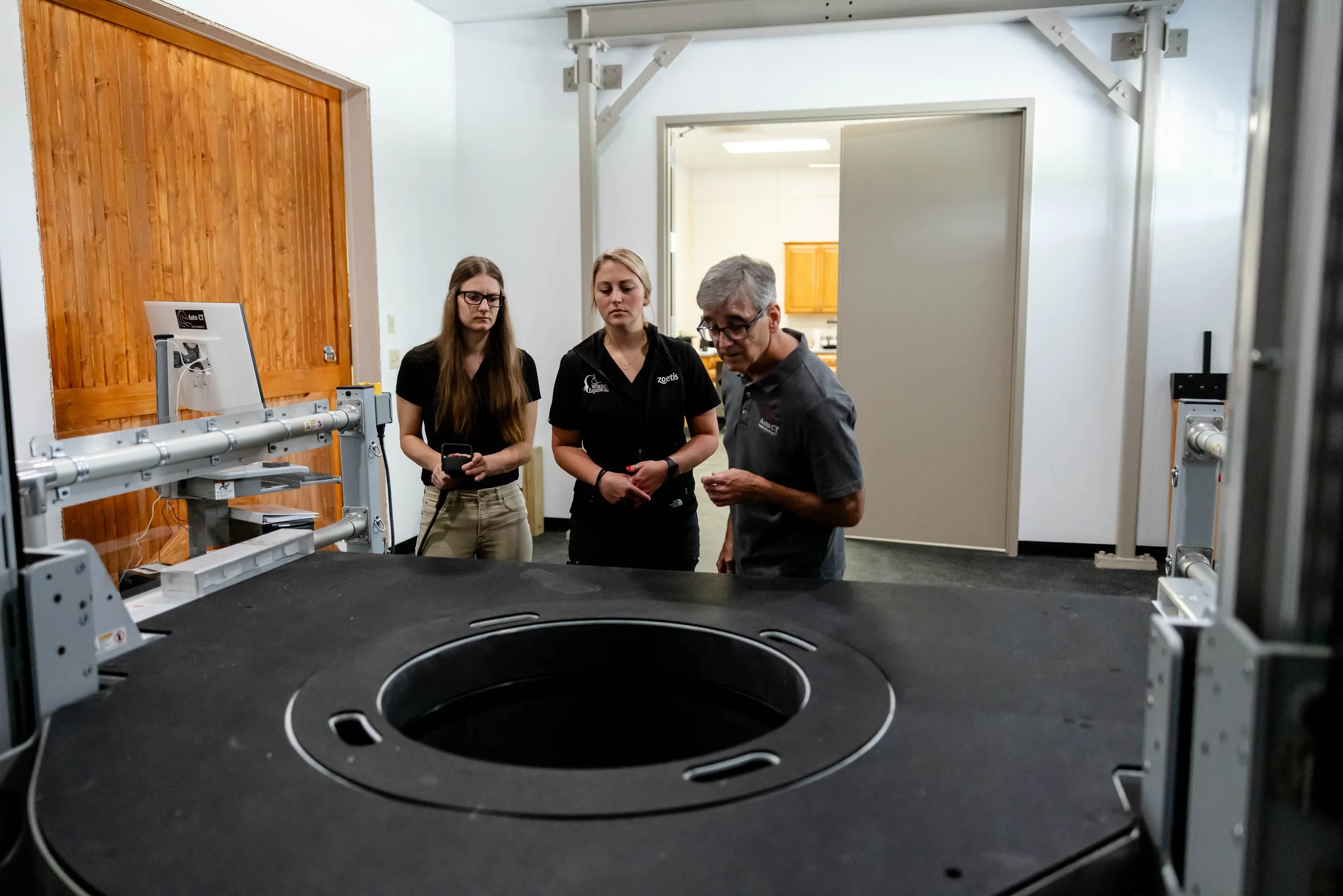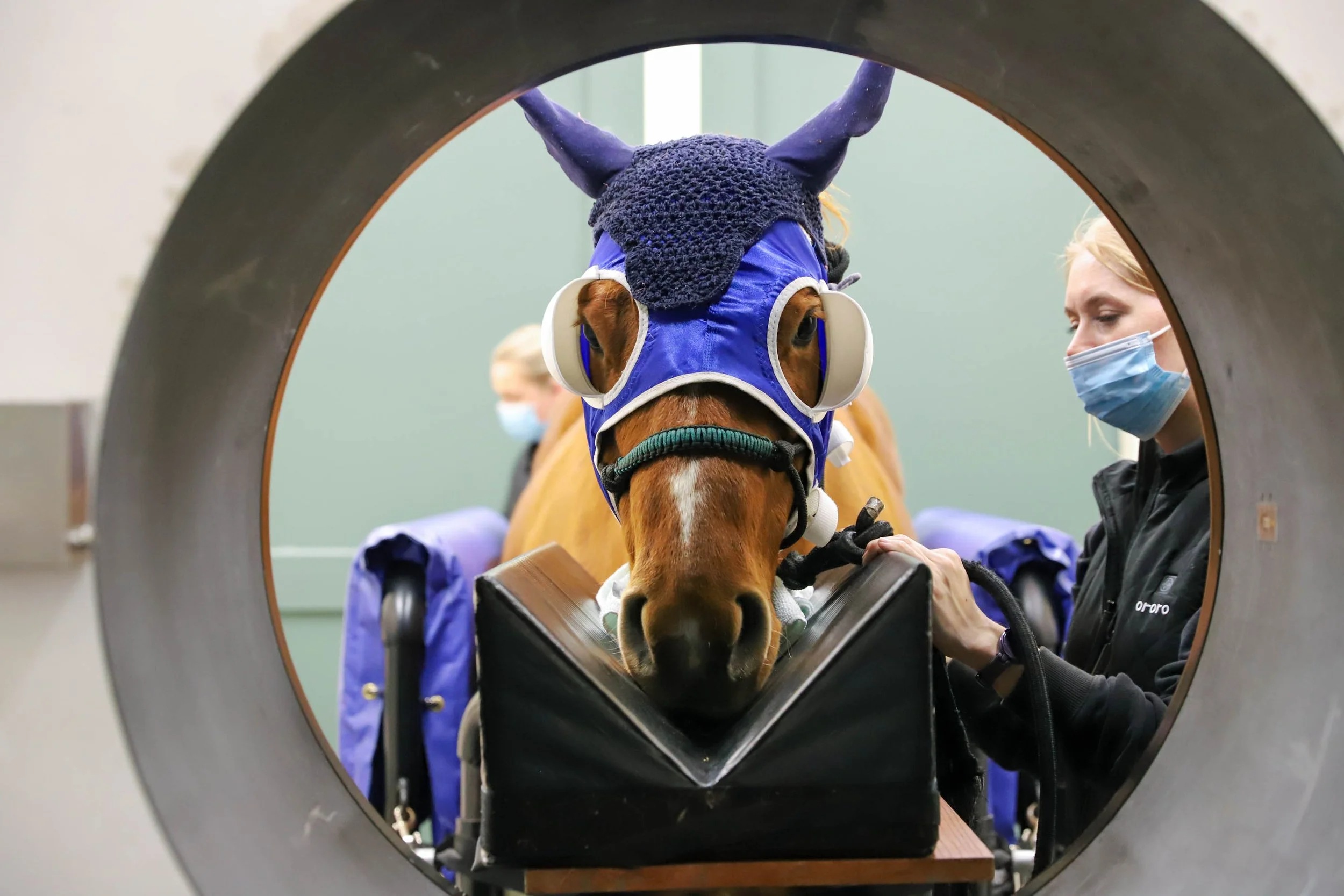THE NEW STANDARD OF CARE IN EQUINE IMAGING IS HERE
Asto CT® was founded on the principle of offering safe, high-quality CT imaging to improve quality of life for horses and ensure peace of mind for their owners. Our state-of-the-art equine CT scanner is customized to meet the needs of horses in a safe and comfortable environment for the animal.
We are pioneering the use of cutting-edge robotics in combination with advanced fan-beam CT to provide state-of-the-art screening and diagnosis. Our first mission is to improve diagnosis and treatment of conditions of the distal limb and diseases of the head and neck in horses.
Asto CT Timeline
2016
Concept born, founders and advisors unite to develop a standing equine CT solution.
2017
First working prototype built in partnership with PDSI; real-world workflow challenges addressed with clinician input.
2018
First successful standing CT scan on a live horse (CeCe), followed by bench-testing validation.
2019
Debut installation at UW–Madison proves safe and practical; early adopters at Minnesota and Melbourne refine performance.
2020–21
Surpass 1,000 clinical scans; hardware and software upgrades continue through COVID, with growing presence at AAEP and BEVA.
2022–25
Global expansion and safety publications; installations at leading equine centers culminate in 10,000+ scans and a decade of impact.
Our Values
Practicality
Engineered for real-world veterinary workflows and environments.
Partnership
Dedicated support from planning to long-term success.
Compassion
Prioritizing safety and comfort for every equine patient.

The Vision Behind Asto CT:
Changing the Future of Equine Care
Meet the visionaries behind Asto CT and discover the story, science, and impact behind this major milestone.
The Clinical side
What began as a bold idea to improve equine imaging and safety has now become a transformative technology with over 10,000 scans performed worldwide. The Equina® by Asto CT offers fast, detailed 3D imaging while the horse remains standing enabling more accurate diagnoses, streamlined workflow, and better outcomes.
The Physics of things
Equina by Asto CT is designed to improve equine diagnostics with high-resolution CT imaging. Combining precision engineering and advanced algorithms, it has completed over 10,000 clinical scans to support accurate and efficient veterinary care.
A Solid Foundation
Asto CT® was founded in 2015 as a result of a research collaboration between the University of Wisconsin-Madison (UW) School of Veterinary Medicine and the Morgridge Institute for Research.
Our team has a combined 100+ years of experience with deep expertise in medical product development and hands-on veterinary care. Our patented approach allows imaging of lower limbs and of the head and neck of a sedated horse in the standing position.
David L. Ergun
Co-Founder, Chief Executive Officer
David has more than 40 years of leadership experience in developing and launching novel medical imaging devices. Prior to founding Asto CT, he was Chief Scientist and R&D leader at GE Healthcare where he brought multiple FDA cleared medical imaging products to market. David holds an Adjunct Professor position with University of Wisconsin-Madison Medical Physics. David's current focus is on improving the diagnosis and treatment of conditions of the distal limb and diseases of the head and neck in horses.
Thomas "Rock" Mackie
Co-Founder, Chair
Rock is Emeritus Professor and an internationally renowned medical physicist at the UW, and founder of several successful ventures, most notably TomoTherapy (now Accuray) and Geometrics (now Philips Healthcare). Co-inventor of the standing equine CT system.
Sabrina Brounts
Dr. Brounts graduated with a DVM from the University of Utrecht School of Veterinary Medicine. After graduating, Sabrina came to the United States to continue her studies. She obtained her master’s degree at the Purdue University and a PhD at the University of Wisconsin-Madison (UW) in Sports Medicine. Currently, Sabrina is a Clinical Professor and Chief of the Morrie Waud Large Animal Hospital at the UW. She is not only a respected surgeon, but an expert in equine sports medicine and rehabilitation. Her research focuses these days on equine tendon issues, regenerative medicine, more efficient surgical techniques, and condylar fractures in Thoroughbred horses.
Lauren Zaddack
Marketing Communications Lead
Lauren has more 15 years of experience in the equine industry, with an extensive background in marketing and selling high-tier horses. She understands the ins and outs of the equine community, and why the Equina is so important. “I truly believe the concept of this technology is ‘larger than life’ and will forever change how we evaluate and diagnose equine patients.”
Peter Muir
Co-Founder
Peter is Co-Director of the Comparative Orthopedic Research Laboratory at UW School of Veterinary Medicine, and internationally recognized for his expertise in veterinary orthopedics, with a particular focus on prevention of breakdown injuries in Thoroughbred racehorses. Co-inventor of the standing equine CT system.
Mark D. Markel
Co-Founder
Mark is Dean of the UW School of Veterinary Medicine and a boarded large animal surgeon with expertise in equine specialty practice, bone and cartilage regeneration/healing and bone and fracture biomechanics, particularly in equine patients. Co-inventor of the standing equine system.
John Leja
Service Manager-Retired
John has more than 30 years engineering, support and management experience in the medical products environment. Communication and cooperation have been a mainstay throughout each of the roles and disciplines. And it is the relationships developed through it all he finds most rewarding.
Steve Dieter
Field Service Engineer
Steve brings more than 25 years of expertise in product development, engineering management, and service. He was first introduced to Asto CT while working at a product development firm, where he contributed to multiple projects supporting the company’s innovation. Inspired by Asto CT’s mission and cutting-edge solutions, Steve enthusiastically joined the team to help bring this technology to our customers.
Michael Bauer
Director of Sales North America
Mike began his professional career in the military as a Medical Specialist (combat medic). Upon graduation from college he worked as a Radiation Therapist for several years before moving into a 20 year Capital Medical Sales career. “Standing CT in the large animal space makes so much sense, and at the heart of this technology is the patients well being!”
Dean Willems
Director of Sales Europe
With over 35 years of experience in Medical Imaging and Radiation Treatment delivery and sales, I look forward to enabling customers in both the human and equine care arenas with the most advanced technologies to the benefit of their patients and practices.

See Equina® in Action
Discover how the world’s only true weight-bearing, fan-beam CT scanner is transforming equine imaging and care. Explore its features, benefits, and real-world impact in veterinary practices like yours.














